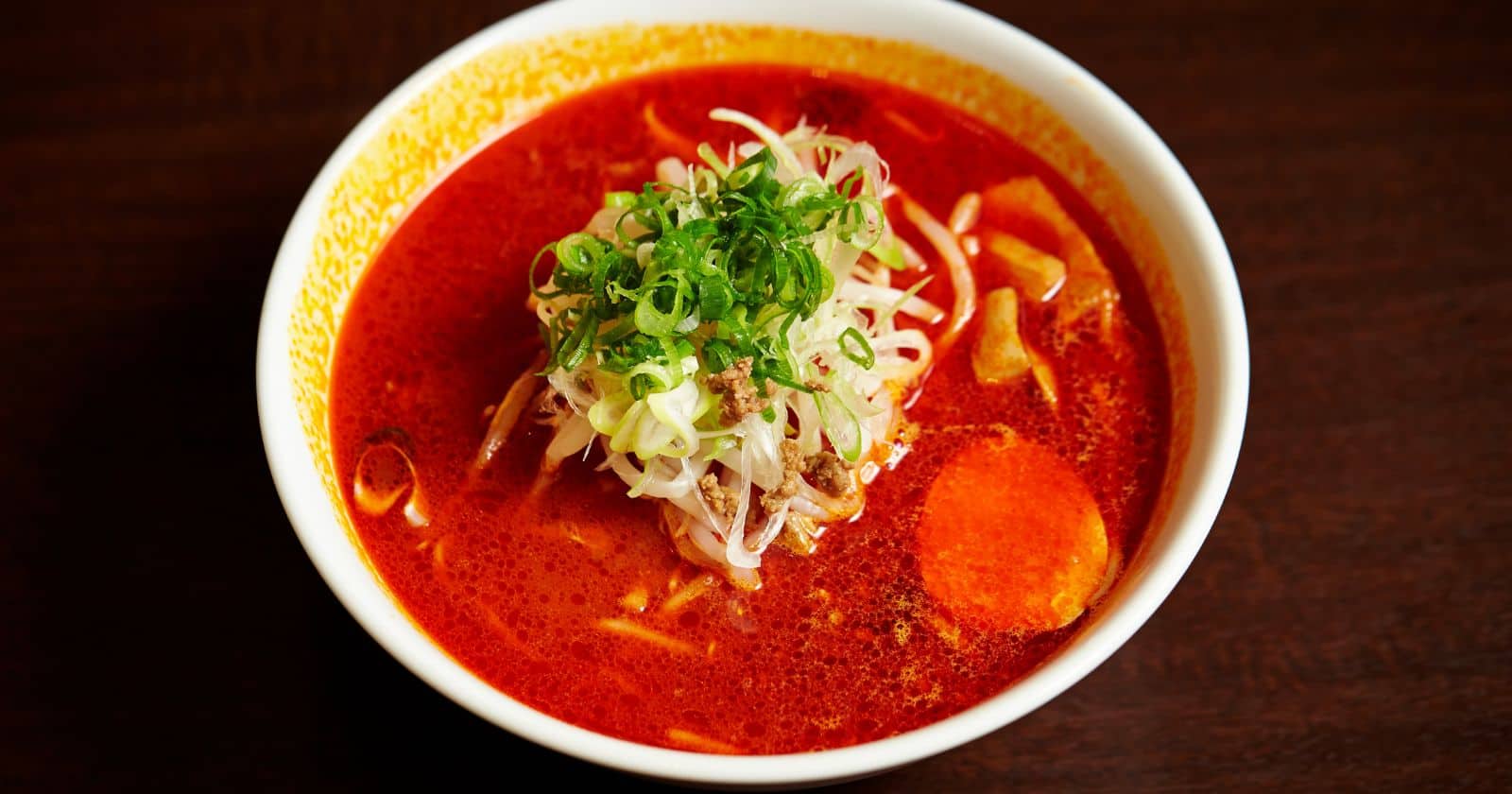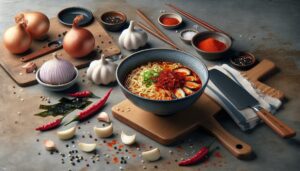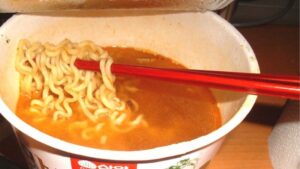Spicy ramen is a tempting, delicious treat that many noodle aficionados worry may lead to weight gain. But does slurping down spicy noodles really cause you to pack on pounds?
The answer is not so simple. While the sodium, fat, and calories in some spicy ramen recipes may contribute to weight gain, there are easy ways to tweak your bowl so you can enjoy the food you love without overdoing it.
By swapping a few ingredients, controlling portions, and avoiding making it a daily habit, you can indulge in spicy, savory ramen that satisfies without expanding your waistline.
So if you’ve been wondering “Can ramen make you fat?” – keep reading to find out how to have your noodles and eat them too.
In the rest of this article, we’ll explore:
- Why the sodium, refined carbs, and fat in some spicy ramen can cause weight gain when eaten regularly
- Healthier ingredient swaps to create a nutritious and balanced spicy ramen bowl
- Tips for portion control so you don’t overdo it on the calories, fat, and sodium
Let’s dig in so you can keep enjoying your favorite spicy ramen flavors guilt-free!
Understanding Why Spicy Ramen Can Lead to Weight Gain
Spicy ramen is often high in calories, fat, and especially sodium, which could lead to weight gain if eaten too often.
- A packet of instant ramen contains 350 calories. While not outrageous, the low protein and fiber means it won’t keep you full.
- The noodles are refined carbs that digest quickly, spiking blood sugar and hunger levels.
- A ton of sodium – often over half your daily value – can increase water retention.
- Fat from oils and fatty pork add unnecessary calories.
So regularly feasting on spicy ramen in large servings could potentially lead to unwanted weight gain over time due to these factors.
Why is Ramen So High in Calories?
One of the reasons spicy ramen can contribute to weight gain is that it tends to be very high in calories. But why exactly is ramen so calorie-dense?
There are a few key factors that add to the high calorie count:
- Refined carbohydrates: The wheat flour used to make ramen noodles is refined, meaning it lacks fiber and nutrients. This causes it to digest quickly and spike blood sugar.
- Fat: Many ramen recipes call for fatty ingredients like pork belly, sesame oil, and egg yolks which significantly increase the calorie count.
- Sodium: The salty seasoning packet is loaded with sodium, which causes water retention and bloating that can mimic fat gain.
- Lack of protein/fiber: Ramen often lacks protein and fiber, so it is not very filling. This makes it easy to overconsume calories.
- Serving size: A single package of ramen often contains 2-3 servings worth of calories. Eating the whole thing packs a big calorie punch.
Can Cup Noodles Make You Fat?
Cup noodles are another popular instant ramen format. But can eating cup noodles make you gain weight?
The answer is yes – for generally the same reasons as packet ramen. Cup noodles tend to be:
- High in refined carbs and calories
- Low in protein, fiber, and nutrients
- Packed with sodium
- Easy to overeat in one sitting
However, there are some key differences between cup and packet ramen:
- Portion sizes – Cup noodles come in a single-serving container, whereas packet ramen contains 2-3 servings. This makes it easier to control portions with cup noodles.
- Broth – Cup noodles have a thicker broth, while packet ramen is designed for you to add your own water. The broth can add calories and fat if made with fatty ingredients.
- Cooking method – Cup noodles just require hot water, while packet ramen needs to be cooked on the stove. This makes cups faster and more convenient.
- Price – Packet ramen is generally cheaper per serving compared to disposable cup noodles.
So while cup noodles are portioned for one meal, they can still lead to weight gain if eaten frequently due to the lack of nutrition. Both cup and packet ramen should be enjoyed in moderation as part of a balanced diet.
Healthier Ingredients For a Nutritious, Balanced Ramen
Luckily, it’s easy to swap in healthier ingredients so you can still enjoy that spicy, savory flavor without going overboard.
Use Lower-Carb Noodle Alternatives
- Trade regular noodles for zucchini noodles or spaghetti squash to lower the carbs.
- These noodle swaps add nutrients and are usually gluten-free.
Opt For Low-Sodium Broth
- Use low-sodium vegetable or chicken broth instead of the salty packet.
- This helps reduce bloating and lower sodium intake.
Mix in Lean Protein
- Chicken, shrimp, tofu, and eggs boost protein to fill you up.
- The extra protein makes the meal more balanced and nutritious.
Load Up On Veggies
- Mushrooms, baby spinach, carrots, broccoli, and peppers add fiber, vitamins, and minerals.
- Go crazy mixing in your favorite veggies to create a rainbow ramen bowl!
Use Healthy Fats Sparingly
- A small drizzle of sesame or olive oil gives flavor without going overboard on fat and calories.
- Limit fatty meats like pork belly and choose leaner proteins.
Why Portion Control is Crucial For Spicy Ramen
Spicy ramen is hard to resist, but overdoing portions can lead to excess calories, fat, and sodium.
- One large bowl can contain 800 calories and over 2,770 mg sodium.
- Stick to a single serving and avoid going back for seconds to keep your ramen cravings in check.
- Adding more protein and fiber helps you feel full faster.
- Eat quickly before noodles expand to control portions.
- Moderate your
spice level so you don’t overeat from numb taste buds.
So go ahead and enjoy that spicy ramen you’re craving! Just be mindful of portions, choose healthier ingredients, and avoid making it a daily habit. With a few simple tweaks, you can indulge in delicious ramen that satisfies without expanding your waistline.





